
Last week Valve outlawed excessive cross promotion and other visual noise from Steam store pages. Here is their official blog post announcing this change.
I am not sure this is a great idea. In today’s post I will look at what they are changing and why I don’t think this is entirely helpful for the mid-tier indie game developers.
Visual junk
I grew up in Tucson, Arizona which became famous in 1970 when LIFE Magazine published an article about how Tucson had the ugliest street in the USA. Here is the giant photo in LIFE magazine. Note I don’t think trees had been invented in the 1970s, what the heck boomers?
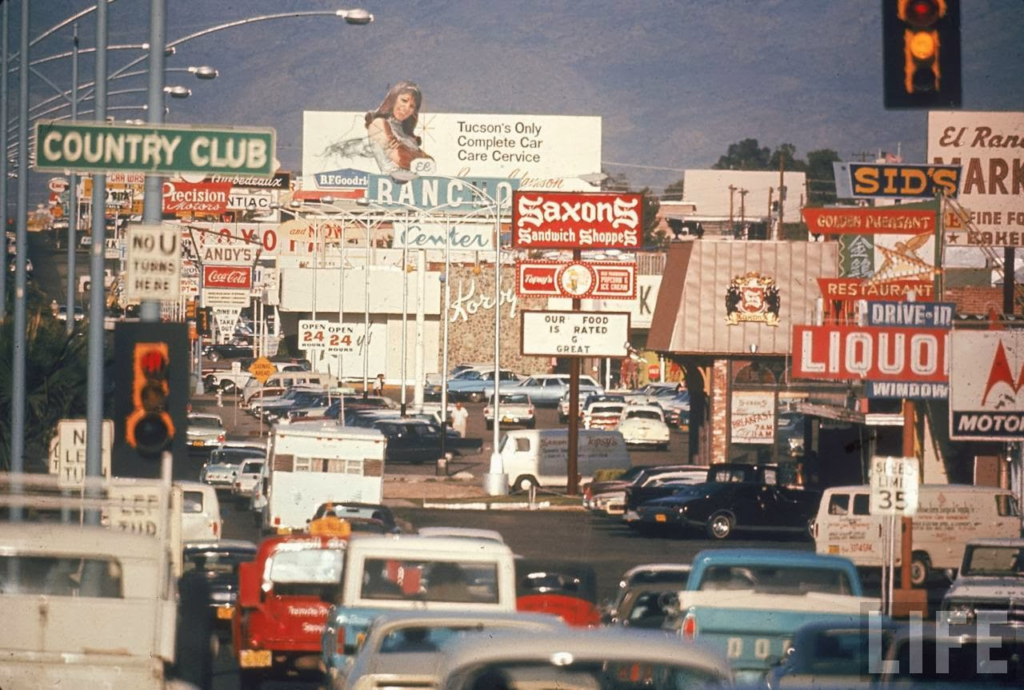
In response, the Tucson city council passed ordinances to regulate street sign height and color with hopes of removing “noise.” Tucson’s sign ordinance is essentially what Valve just passed.
On one hand I think these new rules are great. It means Valve is watching and maintaining their walled garden. The worst thing is when a company rests on what is working and doesn’t change. This change proves Valve is not asleep at the wheel. They are vigilant. I am so happy they are constantly watching the state of their store and removing weeds from their walled garden.
So what is changing? It comes down to 3 major components:
Rule #1: No links to other websites
So you can’t put a big banner that says “Join our discord” (as seen on Once Human’s Steam Page)

Or you can’t do what the developers of Stardeus did:

Rule #2: No embedded imagery that mimics Steam store UI or buttons
So no more of those animated Gifs that show someone clicking the “Wishlist button”. Here is one I found for Deathground
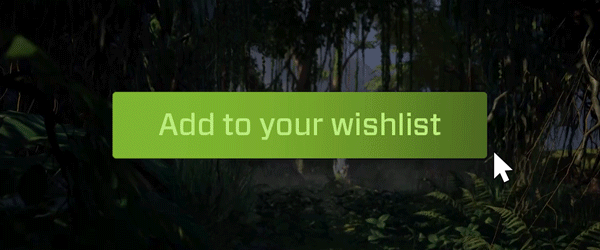
Rule #3: No images, links, or widgets pointing to other games on Steam
This is a big change. For so long you could just enter a URL of a Steam game and it would be auto converted into a widget that would look like this

(Taken from the Crashlands page)
Also some developers would form mini promotional alliances and each post a grid of thumbnails to link to their games (very similar to old school webrings)
This screenshot is taken from Critias Empire
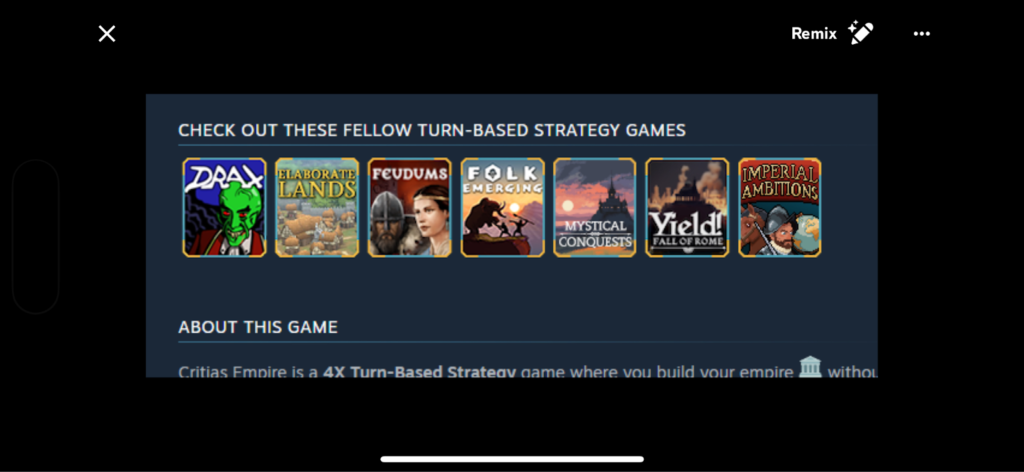
Unfortunately this was quickly abused and some companies added lots of IFrames:

So is this good or bad?
Overall, I think this is a good sign. In the past Valve has been very good at being vigilant to prevent Steam from becoming a hell hole of Spam and dodgy tricks that in the long term turn away customers.
For instance they stepped in to stop “Achievement Spamming” where cheap asset flip games would make their achievement images look like letters of the alphabet so that achievement hunters would buy games they didn’t actually like so they could turn their profiles into weird abominations.
See this user’s profile. That “welcome message” with the torsos is actually a grid of achievements from an asset flip game.

Steam’s rule to remove those banners that link to Discord servers is totally fine. Good riddance. Mostly because Discord is for Mid-Funnel fans to interact with you. For 99% of shoppers visiting your Steam page, they are Top-Of-The-Funnel. They are just trying to figure out who you are. They won’t click it. So the banner is a waste of space.
Although it doesn’t work, I give this developer props for coming up with this way to bend the rules. Don’t worry, they didn’t actually implement it.

So overall this will make Steam look less spammy, and it will have little impact on your wishlist growth rate.
So what’s the bad news?
It isn’t all positive. I really think Valve’s ban on “IFrame widgets” that link to your next game is a major setback for smaller indies. I am disappointed they got rid of this feature.
Here is an example of an “IFrame Widget”.

Here are a bunch of reasons why making us remove this widget sucks:
Reason #1 this sucks: Rolling your audience forward
Small scale indie developers have 0 visibility.
The one advantage small-team-size indies have is they are the
proverbial cockroaches in a nuclear war. Their low overhead costs mean they can release multiple games with varying success levels and survive. A single bomb will not kill them (hopefully). By continuing to survive, they roll whatever miniscule visibility they have from the previous games and can push it towards their next game.
On my benchmarks page for number of wishlists that are typical when you launch your Steam page I found that the games that earned the most wishlists in the first 2 weeks were the ones from developers who released previous games. In the following chart every bar is a different game, every red bar is from a developer who released a game previously.
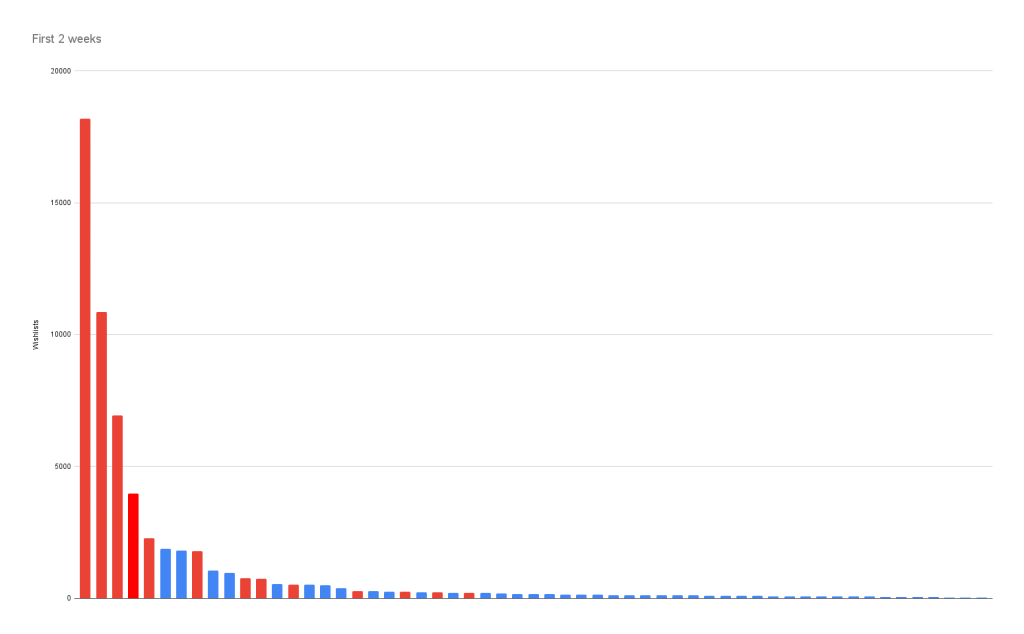
As you can see, the games that earn the most wishlists in their first 2 weeks are almost always from developers who have built up an audience across multiple games. Each game release get bigger and bigger and bigger. That is how you actually survive as an indie. You must roll your following forward with each game.
Reason #2 this sucks: Steam gives more visibility to released games
Steam gives more organic visibility to games that have released (both Early Access and 1.0) than games that are just “coming soon.” This seems obvious when you hear it, but I didn’t realize it until I dug into the numbers of a bunch of games.
Think about it, when Valve gives Steam visibility to a “coming soon” game they are taking a risk. Game dev is VERY HARD and very few developers actually launch their games. Sadly, the most likely case is developers burn out and never release their game and all that traffic that Valve sent them previously is wasted. On the other hand, it makes sense for Valve to direct more traffic to a game that has already been released and can be purchased because at least someone will buy it right now. Valve is at least making SOME money off that visibility it gives out.
I was working with Cold Beam Games who developer the Beat Hazard series and found that on a non-exciting 7-day-period their first 2 released games got more than 3 times the traffic each than their unreleased 3rd game.
So here is the hack. If you add a cross-promotional iFrame Widgets to the Steam pages of the 2 released games, they will send some of their awesome traffic to an unreleased game that Valve naturally underpromotes.

Reason #3 this sucks: IFrame Widget yields a lot of clicks
Within Steam, there are a number of ways to cross promote from your past games to your new one
- IFrame Widget embedded on the Steam page
- “Franchise” list (this is the optional list you can add at the bottom of the Steam page that looks like “More Like This” but features only games that your company made.
- Clickable images in your About this Game (See Critias Empire example above)
- Creating a cross-promotion event
- Creating a Studio Creator Page
- Bundles – But this only works when a game is launched, not coming soon pages.
If you look at the Steamworks backend they actually break out Store page traffic that comes from the IFrame Widget.

I haven’t done a broad survey of hundreds of games, but I asked a handful of devs I am friendly with what their IFrame traffic looked like. Frequently, the IFrame generated more traffic than all the other methods I listed above combined. COMBINED!
I asked the developers of Crashlands how IFrame linking affected their upcoming Sequel Crashlands 2
The cross-page link from CL1 to CL2 accounts for ~40% of all of our UTM-tracked traffic, and 75% of our UTM-tracked wishlists. These visits are highly attributable though (since people are already on Steam), so they’re over-represented in the total UTM wishlists.
Adam Coster (Butterscotch Shenanigans)
Reason #4 this sucks: Cross linking was a publisher superpower
For the most part, there are very few benefits that a publisher brings that you couldn’t do yourself if you have the time or the money. For instance you can just hire a PR firm directly to do your promotion. You can reach out to Streamers directly. You could hire someone to do the Switch Port.
However, one of the key things publishers can give you that you can’t buy is cross linking from the Publisher’s back catalog.

Hooded Horse is the smartest publisher out there right now. If you check out any one of their game’s store pages, they always cross link to one (and only one) of their upcoming games.
- Workers & Resources: Soviet Republic links to Heart of the Machine
- Heart of the Machine links to Terra Invicta
- Terra Invicta links to Menace
A smart publisher focuses on publishing games that target a specific player type and genre so that player later goes on to buy all the other games they publish. This is called “A Brand.”
IFrame linking between games that are in a publisher’s roster is a priceless SUPER POWER and one of the biggest reasons to sign with a publisher.
Why Valve killed the IFrame
I don’t know, but I bet Valve looked at all the stats of all the pages and saw how much traffic the IFrame generated. In most cases it probably netted out to a small number of wishlists per game. I wouldn’t be surprised if the median number of wishlists generated by the IFrame was like 1000 or so over the life of any game. To Valve (who makes most of their money off the hit games that sell millions of copies) 1000 extra wishlists doesn’t seem like much.
But, for smaller indies who are scratching to get to 5000-7000 wishlists so they can appear in popular upcoming, that is pretty significant.
Here is Adam again from Butterscotch Shenanigans on the additional benefits of Cross linking.
Of all of our UTM-attributable marketing efforts, the most effective two things we did by far were also the cheapest and easiest: just linking to Crashlands 2 from the Crashlands store page and from within Crashlands itself. Just doing those two things was more effective than all of our other (trackable) efforts combined.
We’d have had to spend tens of thousands of dollars in advertising to get the same outcome as just adding those links.
So this is definitely a significant blow to cost-effective marketing for indie games. Especially for the case where cross-linking makes the most sense: alerting people to an upcoming sequel. There doesn’t seem to be a decent alternative for doing this on Steam, since the proper mechanism (bundles) can’t include games that aren’t out yet.
Steam disallowing cross-game linking on store pages is a blunt way to solve what seems like a non-issue. But even if excessive cross-linking is a real problem, there must be better solutions out there. The fact that our cross-linking is so effective implies that it’s also useful to players, and that Steam’s built-in mechanisms for accomplishing the same goal isn’t as effective as it could be (otherwise our own cross-linking wouldn’t do much, since page visitors would have already followed the built-in Steam discovery mechanisms instead).
Adam Coster (Butterscotch Shenanigans)
Dear Valve
I get it.
The visual junk on Steam pages got out of hand. There were some definite things you are right to discourage (such as the “join our Discord banner”, “animated wishlist buttons”, “web rings”)
But, maybe too much was thrown away by preventing ALL links from a Steam page. Maybe, just keep IFrame widgets.
As a compromise, what if developers were just allowed to have 1 IFrame per steam page. And they could only link to a game from the same developer or same publisher.
No images with HTML links
No long lists of IFrames.
No IFrames to games from other developers.
MAYBE even orient it towards developers promoting sequels like the Crashlands developers. You could set the rule that you can’t add the IFrame to a game that launched less than 6 months ago.
IF the IFrame is too much, maybe make the “Franchise” bar higher up and more obvious so it doesn’t look like “More Like This.”
I just think the power of the IFrame is worth keeping around.
Tell Valve how much it helps
If you have some of these cross-promo “hacks” hooked up, go look at your Steamworks traffic and see how much it helps. Pick a boring week when no major promotion was happening.

Compare traffic between these sources as they appear in the traffic list:
- Game IFrame Widget
- Franchise Page
- News Hub and Events
- Bundle Page
If the IFrame is your biggest source among these, let Valve know. Be nice! Be honest! And please be constructive! But, show them data and tell them personal stories about how this affects you.
Maybe we can run a “Save the IFrames” campaign and at least preserve them for future generations.
Summary
After Tucson passed the sign ordinance, businesses were forced to pull down their gaudy, neon, and spinning signs that covered Speedway. The street did become a bit more conventionally attractive. There are a lot more trees now and many fewer huge neon signs. But LIFE never came back to say “Way to go!” it is better!
Here is a picture I snagged from google maps recently.
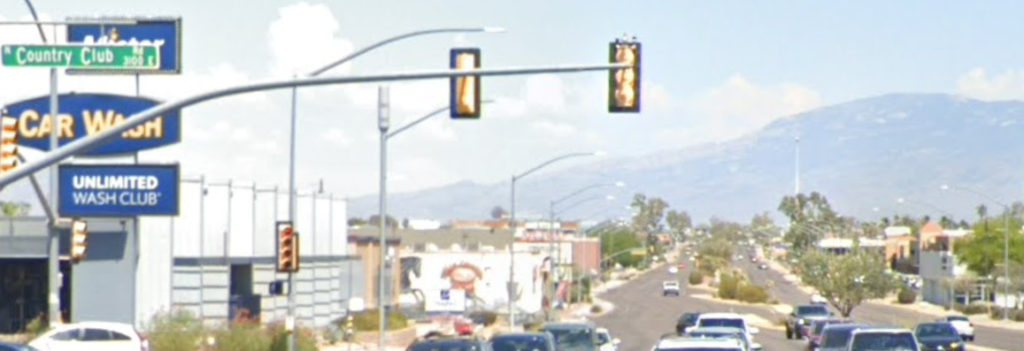
Ironically, The Ignite Sign Museum recently opened in Tucson to preserve the signs that once lined the ugliest street in the USA. People pay to go see them! Including me! It is a pretty cool place and if you visit Tucson I highly recommend you go.
Here are some pictures I took when I went last year. (Those people in the background are taking a Neon Bending class which sounds awesome.)


So maybe one day our ugly Steam pages will be looked back on nostalgically.
What to do without the IFrame?
In my next blog post I will look at a couple alternatives to try and recapture the cross promotional ability that was taken from us when the IFrame went away. It won’t be easy, but some devs have made it work.